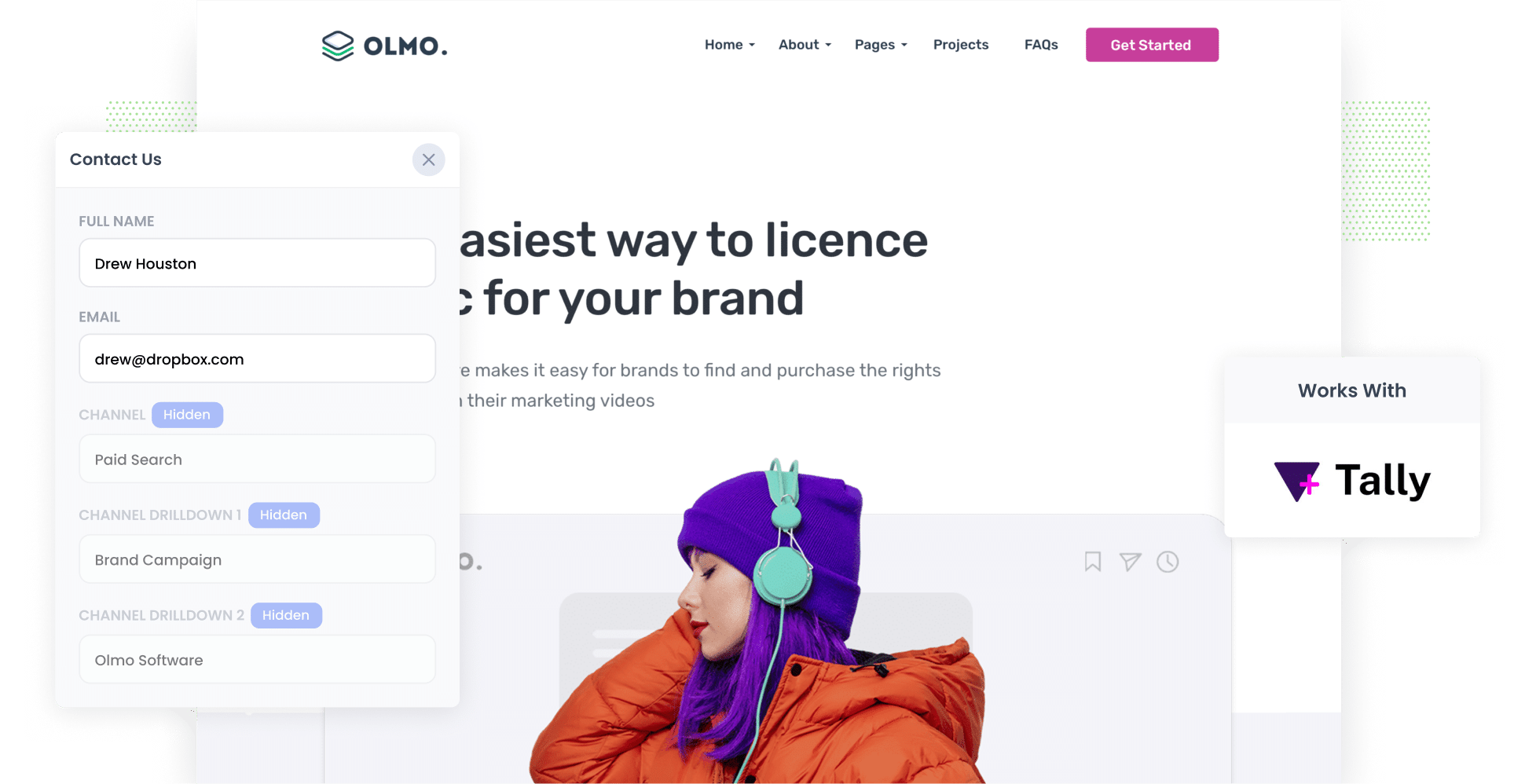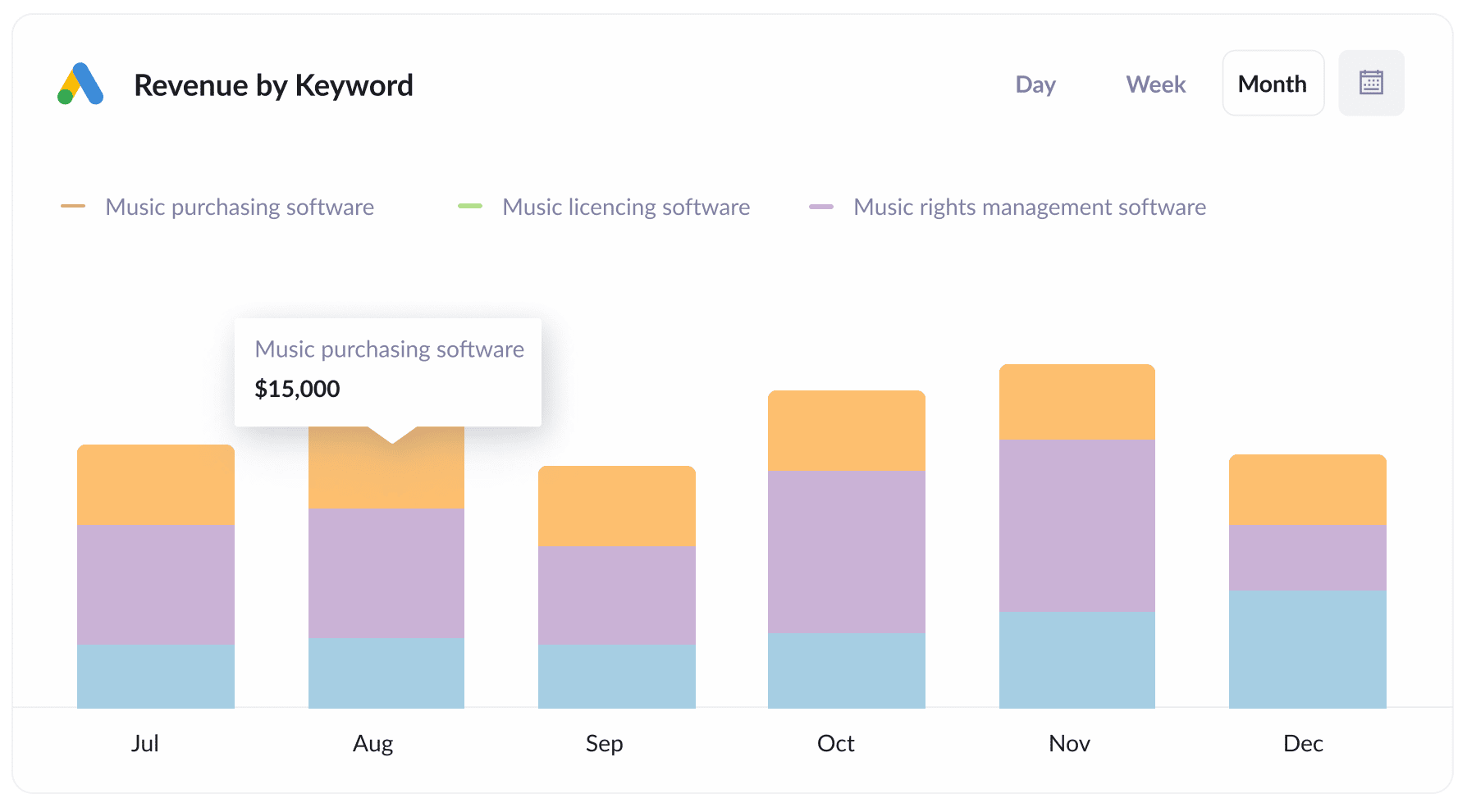The easiest way to capture Google Ads data in Tally Forms
Learn how to capture Google Ads data with each submission of your Tally Forms, so you can track which campaigns, ad groups, keywords and more are generating your leads

Google Ads is a great way to attract new leads and customers for your business.
But how do you know if it's working or not?
Tools like Google Analytics can tell you how many website visitors you're getting from your Google Ads, but in order to know if it's working you need to be able to track how many leads & customers you are getting.
That's where Attributer comes in.
In this article, we'll show you how to use Attributer to capture Google Ads data in Tally Forms, so that you can ultimately see how many leads & customers you're getting from your Google Ads (and which campaigns, ad groups, etc are performing best).
4 simple steps to capture Google Ads data in Tally Forms
Attributer makes it easy to capture Google Ads data in Tally Forms. Here's how it works:
1. Add UTM parameters to your ads

To get started, you first need to include UTM parameters in your existing Google Ads.
In case you're not familiar with UTM parameters, they're simply additional bits of text that you append to the end of the URL you wish to send people to from your campaigns.
For instance, if you want someone to visit a page such as attributer.io/integrations/tally-forms, your final URL with UTM parameters should look like this:
attributer.io/integrations/tally-forms?utm_medium=paidsearch&utm_source=google&utm_campaign=brand-campaign
While the information included in UTM parameters is customizable, for Google Ads, it's generally recommended to follow this format:
- UTM Medium = Paid search
- UTM Source = Google
- UTM Campaign = Your Google Ads campaign name
- UTM Term = The ad group name the ad is part of
- UTM Content = The keyword they searched for (which can be added automatically using ValueTrack parameters)
Fortunately, adding UTM parameters to your URLs is a simple process, and we've outlined the best way to do it in Google Ads in this article.
2. Add hidden fields to your forms

After adding UTM parameters to your Google Ads, the next step is to include hidden fields in your lead capture forms, such as the 'Contact Us' or 'Request a Quote' forms on your website.
To capture Google Ads data, you need to include the following hidden fields in your forms:
- Channel
- Channel Drilldown 1
- Channel Drilldown 2
- Channel Drilldown 3
- Landing Page
- Landing Page Group
Adding hidden fields to your existing Tally Forms is easy and full step-by-step instructions can be seen here.
3. Attributer writes Google Ads data into the hidden fields

Once you have added hidden fields to your forms, Attributer will start to track where your website visitors are coming from.
Then when a visitor completes one of your Tally Forms, Attributer will fill out the hidden fields with relevant Google Ads data (sourced from the UTM parameters you have added).
For example, imagine you are a marketer at Dropbox and someone arrives at your website through a Google Ads campaign. Attributer will fill out the hidden fields as follows (based on the UTM parameters used):
- Channel = Paid search
- Channel Drilldown 1 = Google
- Channel Drilldown 2 = Brand campaign
- Channel Drilldown 3 = Free account ad
In addition to capturing UTM parameters, Attributer also records the visitor's landing page, such as 'dropbox.com/features/cloud-storage', as well as the initial landing page group, such as 'features'.
4. Google Ads data is captured in Tally Forms

Once visitors submit the form, the Google Ads data that Attributer wrote into the hidden fields is gathered alongside the visitor's name, email, phone number, and company name, provided in the form.
By capturing this data in Tally Forms, you can:
- See it in your Tally Forms account (in the Submissions section)
- Incorporate it into the new lead notification emails that Tally Forms sends out
- Forward it to your CRM, such as Salesforce, Hubspot, Pipedrive, and many others.
- Export it to a spreadsheet and produce charts and graphs that show the number of leads and customers you receive from each Google Ads campaign.
Why Attributer is the best way to capture Google Ads data in Tally Forms
Here's why Attributer is the best way to capture Google Ads data in Tally Forms:
1. Attributer captures all traffic sources
In addition to providing attribution data on leads that come from your Google Ads, Attributer also provides information on leads that come to your website via other channels (such as Organic Social, Referral, Direct, Paid Social, or Organic Search).
This means you can see the source of ALL your leads and customers (not just those from your Google Ads) and can make informed decisions about how to allocate your resources to maximize growth.
2. Attributer remembers the data as visitors browse your site
There are alternative methods to capture Google Ads data in Tally Forms, however, these methods require the UTM parameters to be present in the URL of the page where the form is filled out.
This poses a problem as the UTM parameters are lost if a visitor fills out the form on a different page from where they initially landed.
For instance, imagine a visitor clicks on your Google Ad and lands on your website's homepage. They then navigate to the Contact Us page to fill out a form. The UTM parameters will not be captured because the form wasn't filled out on the same page where they first landed.
Fortunately, Attributer resolves this issue by saving the UTM parameters in a cookie within the visitor's browser, meaning it will always pass them through regardless of the page where the form was completed.
3. Provides cleaner data
Attributer was developed to accommodate disparities in UTM usage and to properly match leads with the appropriate channel.
For example, suppose you use utm_source=google in certain campaigns and utm_source=adwords in others, which is typical if different people or agencies have managed your Google Ads at different times.
In that instance, Attributer can still attribute the lead to the correct channel, which in this scenario would be Paid Search.
4. Attributer captures landing page data
Attributer not only captures Google Ads data, but it also tracks the landing page URL as well (e.g., https://attributer.io/blog/capture-utm-parameters-tally).
With this information, you can how many leads & customers you're getting from specific areas of your website, such as your blog. Moreover, you can drill down and analyze the performance of each blog post by viewing the number of leads and customers it generates.
3 example reports you can run when you capture Google Ads data in Tally Forms
Before founding Attributer, I used to run marketing & analytics team for other companies for over 15 years.
In that time, I spent millions of dollars on Google Ads and ran hundreds of reports to track how many leads & customers we were getting.
Over time, I developed a few favourite reports that I found the most useful in tracking Google Ads performance. These are those reports:
1. Leads by Channel

Like most businesses, you are probably getting visitors and leads from a variety of different channels, including Organic Search, Paid Search, Organic Social and more.
This report, which shows the number of leads you get each month broken down by the channel they came from, can help you give you a high-level view of which of those channels are performing best.
This can be useful to understand where you should be investing further. For instance, if you are getting most of your leads from Organic Search but a lot of your budget is going to Paid Search, it might be time to reconsider.
2. Customers by Google Ads campaign

If you're probably running multiple campaigns in Google Ads, then you'd probably like to track how each one is performing.
The above chart can help you. It shows how many customers have been generated each month broken down by the Google Ads campaign they came from.
It can help you understand which campaigns are actually generating customers for your business (versus just generating clicks to your website that don't actually convert).
3. Revenue by Keyword

If you're sending the Google Ads data into your CRM (and using your CRM to track sales & close deals), then you can run a report like the one above which shows how much revenue you've generated from new customers, broken down by the keyword you were bidding on.
This helps you understand which keywords are performing best for your business, and you can then put more budget behind those to get more leads & customers.
Wrap up
Attributer automatically captures the UTM parameters from your Google Ads every time a visitor submits a Tally form on your website.
This allows you to easily track which campaigns, ad groups, keywords, etc are generating the most leads & customers for your business.
But that's not all. Attributer also captures data on leads from other sources, such as Organic Search and Organic Social, giving you a complete view of where your leads and customers are coming from.
And the best part? Attributer offers a free 14-day trial and it usually only takes about 15 minutes to set up, so you can try it out and see the benefits for yourself!
Get Started For Free
Start your 14-day free trial of Attributer today!

About the Author
Aaron Beashel is the founder of Attributer and has over 15 years of experience in marketing & analytics. He is a recognized expert in the subject and has written articles for leading websites such as Hubspot, Zapier, Search Engine Journal, Buffer, Unbounce & more. Learn more about Aaron here.
